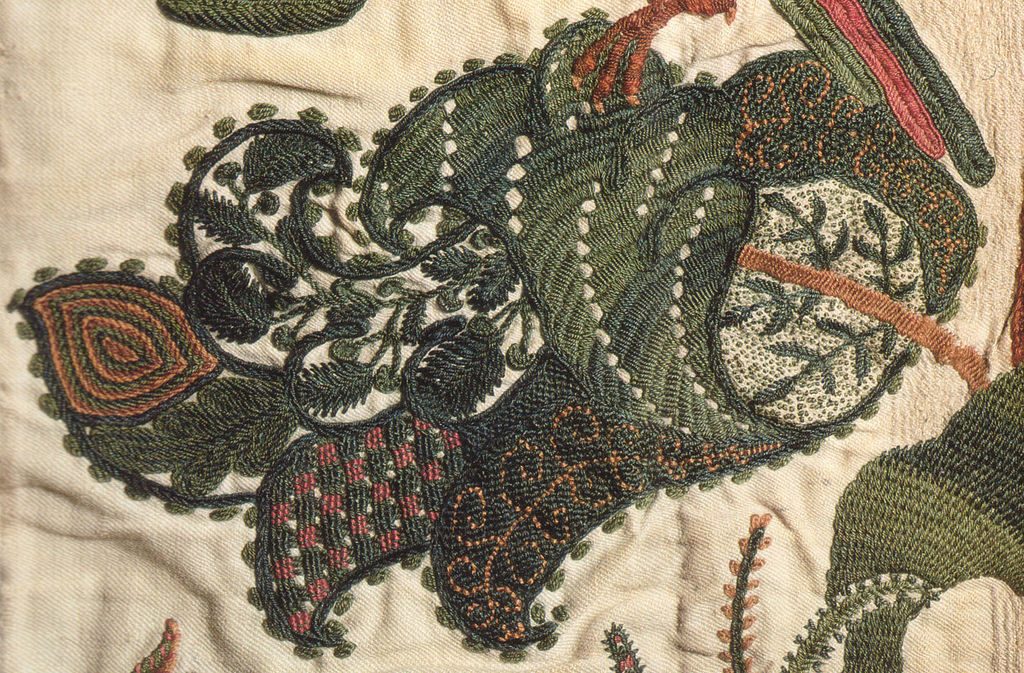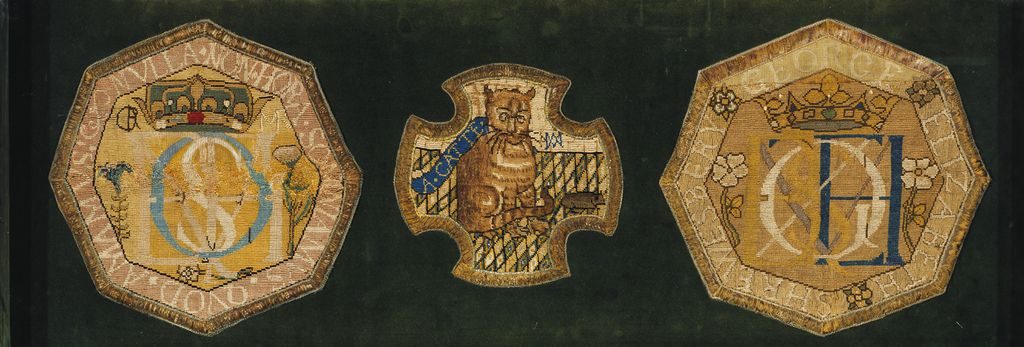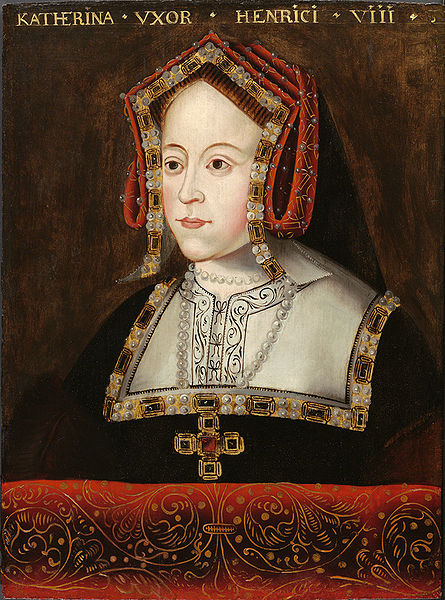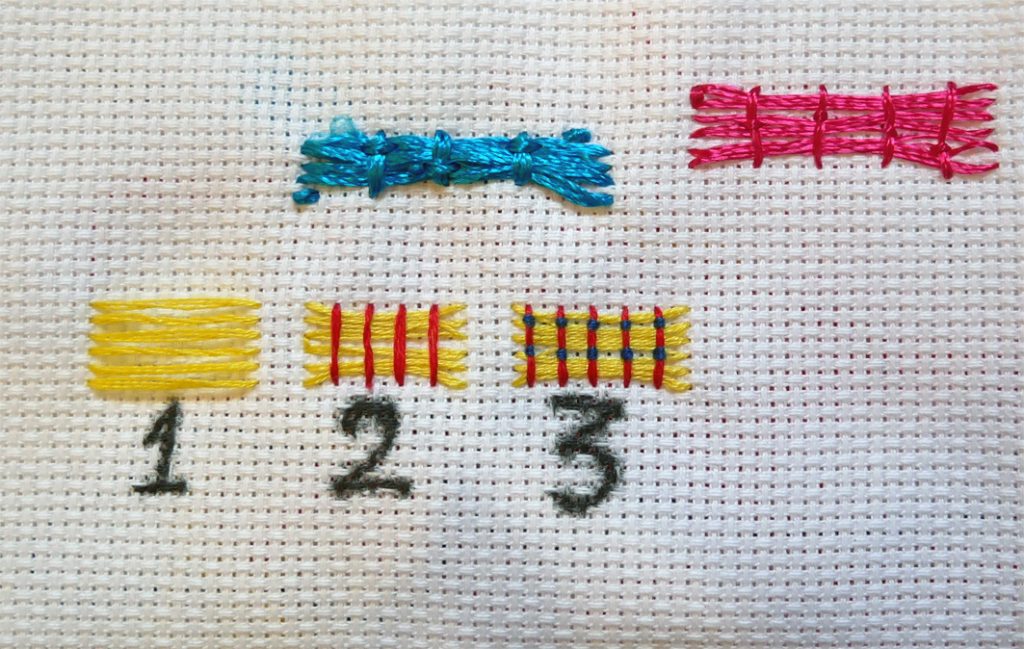Today we had an inspiring talk by our secretary Penny Mackinder. Penny is a very keen embroiderer with a passion for the history of her art form. As well as a comprehensive presentation, Penny brought in some antique samplers (dating back to 1810) and showed us how to execute a Bayeux embroidery stitch.
Some interesting information from Penny’s presentation
Tapestry vs. needlework
A tapestry is the creation of a fabric. It starts with the warp in place, and the fabric is created by adding in the weft.
Needlework is used on the surface of an already created fabric and is used as a decorative element.
Crewel embroidery is a free form style of needlework done using woollen thread on a linen fabric.

Detail of a fanciful leaf in crewel embroidery on a curtain, c. 1696, Victorian & Albert Museum T.166-1961
Mary Queen of Scots was a very skilled needlewoman. During her time under house arrest in England, she and her custodian Bess of Hardwick created many examples of cross stitch works using coloured silks on canvas.

Image from: https://www.rct.uk/collection/28223/embroidery
Catherine of Aragon was another famous embroiderer. Blackwork was already around in England, but she made it a very popular style. It became very fashionable during the reign of her husband Henry VIII. Catherine would make and embroider shirts for her husband, even after their divorce.

Portrait of Katherine of Aragon, c.1560 English School. Blackwork embroidery can be seen on her shirt collar.
Bayeux Embroidery Stitch

Bayeux Embroidery Stitch (multiple colours used for demonstration purposes, use the same colour thread throughout the steps to complete your stitch.)
- Using 2 or 3 strands of embroidery floss stitch long horizontal lines to cover an area of desired size. (Yellow)
- Using the same thread, stitch vertical lines down at equal intervals over the horizontal lines. (Red)
- Complete the stitch by using tiny stitches across the vertical ones to secure them in place.(Blue)
More resources:
The Bayeux Tapestry will be loaned to the United Kingdom in 2022 and displayed in the British Museum – definitely a must see!
Weavers of the Clouds: Textile Arts of Peru is an exhibition at the Fashion and Textile Museum in Bermondsey, London.
Although this exhibition has now finished, you can download the exhibition guide from the FTM website.